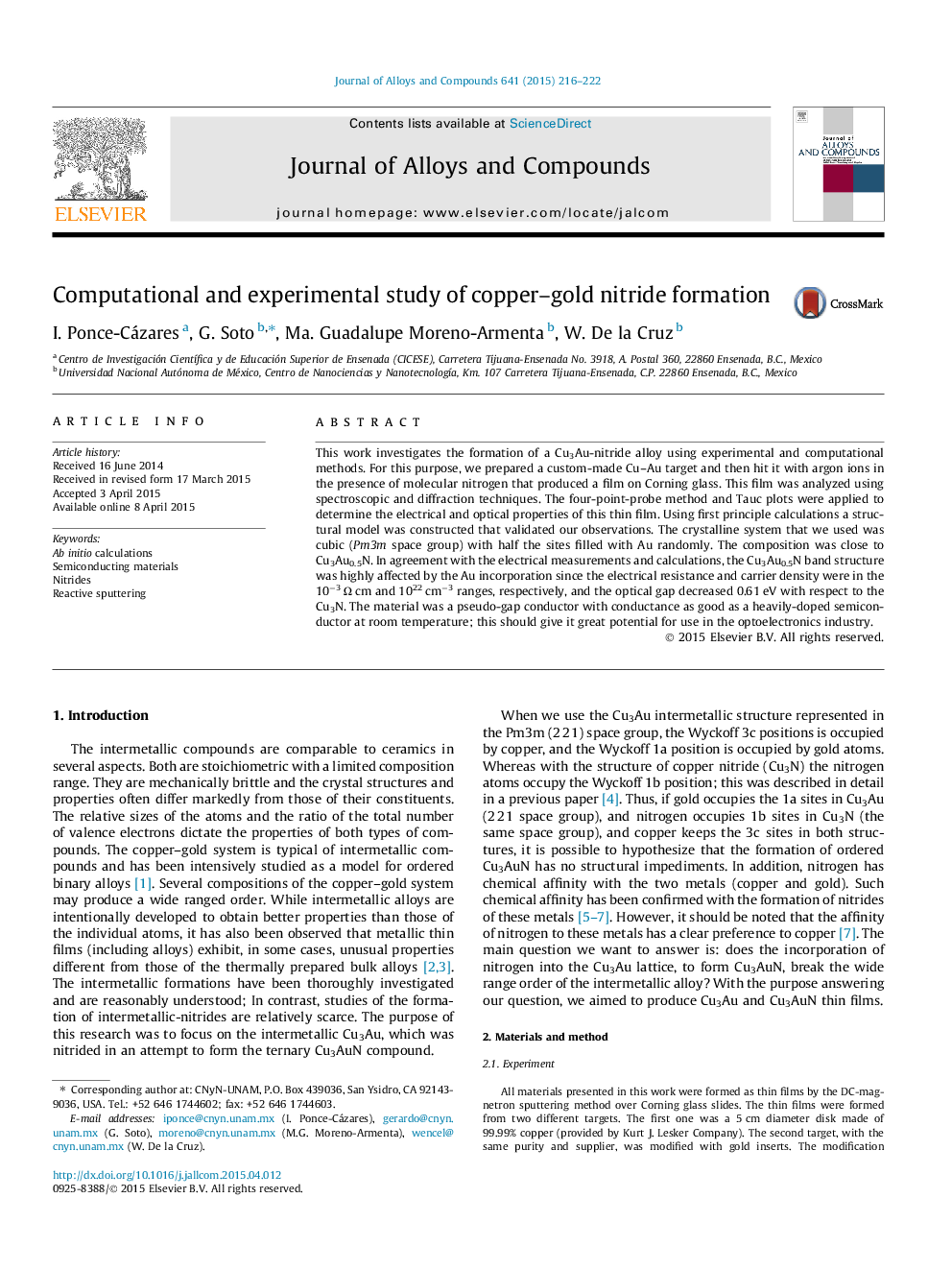| Article ID | Journal | Published Year | Pages | File Type |
|---|---|---|---|---|
| 7998887 | Journal of Alloys and Compounds | 2015 | 7 Pages |
Abstract
This work investigates the formation of a Cu3Au-nitride alloy using experimental and computational methods. For this purpose, we prepared a custom-made Cu-Au target and then hit it with argon ions in the presence of molecular nitrogen that produced a film on Corning glass. This film was analyzed using spectroscopic and diffraction techniques. The four-point-probe method and Tauc plots were applied to determine the electrical and optical properties of this thin film. Using first principle calculations a structural model was constructed that validated our observations. The crystalline system that we used was cubic (Pm3m space group) with half the sites filled with Au randomly. The composition was close to Cu3Au0.5N. In agreement with the electrical measurements and calculations, the Cu3Au0.5N band structure was highly affected by the Au incorporation since the electrical resistance and carrier density were in the 10â3 Ω cm and 1022 cmâ3 ranges, respectively, and the optical gap decreased 0.61 eV with respect to the Cu3N. The material was a pseudo-gap conductor with conductance as good as a heavily-doped semiconductor at room temperature; this should give it great potential for use in the optoelectronics industry.
Related Topics
Physical Sciences and Engineering
Materials Science
Metals and Alloys
Authors
I. Ponce-Cázares, G. Soto, Ma. Guadalupe Moreno-Armenta, W. De la Cruz,
